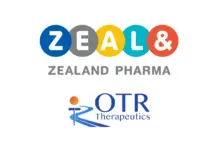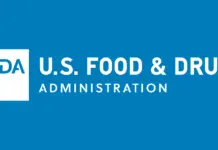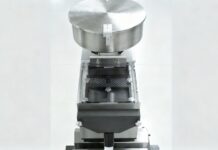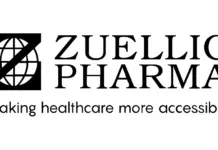Pfizer Inc announced results of two Phase 3 studies demonstrating the immunogenicity of TRUMENBA® (Meningococcal Group B Vaccine) against invasive meningococcal B (MnB) strains representative of prevalent strains in the U.S. and Europe. The two studies, one in adolescents and one in young adults, met all primary immunogenicity endpoints. Also, secondary data presented show that TRUMENBA demonstrated similar immune responses against ten additional MnB strains, in both adolescents and young adults. The data, which continue to support the vaccine’s current safety and tolerability profile, were presented at the 34th Annual Meeting of the European Society for Paediatric Infectious Diseases (ESPID 2016).
“TRUMENBA is designed to provide protection against serogroup B meningococcal disease,” said Kathrin Jansen, Ph.D., senior vice president and head of Vaccine Research and Development for Pfizer Inc. “The Phase 3 data show that TRUMENBA elicits an immune response that is effective against prevalent meningococcal serogroup B strains in the U.S. and Europe, as well as 10 additional strains of this unpredictable disease. These data support the expectation that vaccination with TRUMENBA will help prevent this uncommon, but devastating disease in adolescents and young adults.”
These Phase 3 data support additional upcoming global regulatory submissions and the planned U.S. supplement to request the conversion of Accelerated Approval to Traditional Approval for TRUMENBA.
In October 2014, TRUMENBA was granted Accelerated Approval by the U.S. Food and Drug Administration (FDA) for active immunization to prevent invasive disease caused by Neisseria meningitidis serogroup B in individuals 10 through 25 years of age. In 2015, the U.S. Centers for Disease Control and Prevention’s (CDC) Advisory Committee on Immunization Practices (ACIP) recommended serogroup B meningococcal vaccination for certain persons aged 10 years and older at increased risk for meningococcal disease.1 They also recommended that a MnB vaccine series may be administered to adolescents and young adults 16 through 23 years of age (preferred age 16 through 18) to provide short term protection against most strains of MnB disease.2
Phase 3 Study in Adolescents
One Phase 3 study was a randomized, active-controlled, observer-blinded study that included approximately 3,600 healthy individuals 10 through 18 years of age in the U.S. and Europe. Individuals were randomized to receive one of three different lots of TRUMENBA in a 0, 2, 6 month schedule or a control, licensed hepatitis A (HAV) vaccine, at 0 and 6 months and saline at 2 months. Immune responses were assessed by serum bactericidal assays using human complement (hSBA). The study primary endpoint assessed the percentage of subjects with a response to four primary MnB test strains (N=1210-1266), representative of prevalent MnB strains, and the secondary endpoint assessed responses to 10 additional MnB test strains in a population subset (N=266-281).
The hSBA responses one month after doses 2 and 3 against the four primary MnB test strains as defined by hSBA responses (titers ≥LLOQ) were 64.0%-99.1% and 87.1%-99.5%, respectively. As these four primary strains are representative, they predict the ability of antibodies elicited by TRUMENBA to be active against diverse circulating strains. The hSBA responses to the 10 additional MnB test strains were 61.1%-100.0% and 75.1%-98.6% one month after dose 2 and 3, respectively. These data were presented in an oral session at the ESPID meeting.
Safety and tolerability were also evaluated. Local and systemic reactions were reported more commonly with TRUMENBA. Reactogenicity events were mostly mild to moderate in severity and of short duration (median, 1-2 days). Injection site pain (92.6%) and headache (67.1%) were the most common local and systemic reactions with TRUMENBA, respectively. Adverse events were generally similar between the two study groups.
Phase 3 Study in Young Adults
A second Phase 3 study was a randomized, placebo-controlled, observer-blinded study that included approximately 3,300 healthy individuals 18 through 25 years of age in the U.S. and Europe. Individuals were randomized to receive TRUMENBA in a 0, 2, 6 month schedule or a saline control. Immune responses were assessed by serum bactericidal assays using hSBAs. The study primary endpoint assessed the percentage of subjects with a response to four primary MnB test strains (N=1702-1714), representative of prevalent MnB strains, and the secondary endpoint assessed responses to 10 additional MnB test strains in a population subset (N=273-284).
The hSBA responses one month after dose 2 and 3 among TRUMENBA recipients against the four primary MnB test strains as defined by hSBA responses (titers ≥LLOQ) were 68.3%-97.4% and 87.4%-99.4%, respectively. As these four primary strains are representative, they predict the ability of antibodies elicited by TRUMENBA to be active against diverse circulating strains. The hSBA responses to the 10 additional MnB test strains were 51.6%-97.9% and 71.3%-99.3% one month after dose 2 and 3, respectively.
Safety and tolerability were also evaluated. Local and systemic reactions were reported more commonly with TRUMENBA. Reactogenicity events were mostly mild to moderate in severity and of short duration (median, ≤3 days). Injection site pain (89.6%) and fatigue (64.6%) were the most common local and systemic reactions with TRUMENBA, respectively. Adverse events were generally similar for the two study groups.
TRUMENBA is currently approved in the U.S.Indication for TRUMENBA in the U.S.
TRUMENBA (Meningococcal Group B Vaccine) is indicated for active immunization to prevent invasive disease caused by Neisseria meningitidis serogroup B in individuals aged 10 through 25 years of age.
Approval of TRUMENBA is based on the demonstration of immune response, as measured by serum bactericidal activity against four serogroup B strains representative of prevalent strains in the United States. The effectiveness of TRUMENBA against diverse serogroup B strains has not been confirmed.
About TRUMENBA® (Meningococcal Group B Vaccine)
TRUMENBA® is a sterile suspension composed of two recombinant lipidated factor H binding protein (fHBP) variants from N. meningitidisserogroup B, one from fHBP subfamily A and one from subfamily B (A05 and B01, respectively). fHBP is one of many proteins found on the surface of meningococci and contributes to the ability of the bacterium to avoid host defenses. fHBPs can be categorized into two immunologically distinct subfamilies, A and B. The susceptibility of serogroup B meningococci to complement-mediated, antibody-dependent killing following vaccination with TRUMENBA is dependent on both the antigenic similarity of the bacterial and vaccine fHBPs, as well as the amount of fHBP expressed on the surface of the invading meningococci.3
About Meningococcal Disease
Meningococcal disease can affect any one, at any age.4 The reported incidence of Invasive Meningococcal Disease varies by region, ranging from less than 0.5 cases per 100,000 in North America and just under 1 case per 100,000 in Europe, and up to 10-1,000 cases per 100,000 during epidemic years in Africa.5 The majority of invasive meningococcal disease cases worldwide can be attributed to sixNeisseria meningitidis serogroups (A, B, C, W-135, X and Y).5,6
Meningococcal serogroup B disease affects all ages. In Europe, the majority of meningococcal disease cases are caused by serogroup B strains.7 Global serogroup distribution patterns vary between countries, and change over time.5
Serogroup B meningococcal disease may result in life-altering, significant long-term and permanent medical disabilities.8,9,10 Despite the availability of antibiotic treatment, 1 in 10 adolescents and young adults who contract MnB die and many of those who survive are afflicted with long-term disabilities, such as brain damage, hearing loss, learning disabilities or limb amputations.11
Pfizer Inc.: Working together for a healthier world™
At Pfizer, we apply science and our global resources to bring therapies to people that extend and significantly improve their lives. We strive to set the standard for quality, safety and value in the discovery, development and manufacture of health care products. Our global portfolio includes medicines and vaccines as well as many of the world’s best-known consumer health care products. Every day, Pfizer colleagues work across developed and emerging markets to advance wellness, prevention, treatments and cures that challenge the most feared diseases of our time. Consistent with our responsibility as one of the world’s premier innovative biopharmaceutical companies, we collaborate with health care providers, governments and local communities to support and expand access to reliable, affordable health care around the world. For more than 150 years, Pfizer has worked to make a difference for all who rely on us. To learn more, please visit us atwww.pfizer.com.
1 Folaranmi T, et al. Use of Serogroup B Meningococcal Vaccines in Persons Aged ≥10 Years at Increased Risk for Serogroup B Meningococcal Disease: Recommendation of the Advisory Committee on Immunization Practices, 2015. Morbidity and Mortality Weekly Report. 2015; 64(22);608-612. http://www.cdc.gov.db.usciences.edu/mmwr/preview/mmwrhtml/mm6422a3.htm(link is external). Accessed May 6, 2016.
2 MacNeil J, et al. Use of Serogroup B Meningococcal Vaccines in Adolescents and Young Adults: Recommendations of the Advisory Committee on Immunization Practices, 2015. Morbidity and Mortality Weekly Report. 2015; 64(41);1171-6.http://www.cdc.gov/mmwr/preview/mmwrhtml/mm6441a3.htm(link is external). Accessed May 6, 2016.
3 TRUMENBA® (Meningococcal Group B Vaccine) Prescribing Information. Philadelphia, PA: Pfizer, Inc. 2015.
4 World Health Organization. Epidemics of meningococcal disease, African meningitis belt, 2001. Wkly Epidemiol Rec. 2001; 76(37); 281-288. http://www.who.int/docstore/wer/pdf/2001/wer7637.pdf(link is external). Published 2001. Accessed February 10, 2016.
5 Halperin SA, et al. Vaccine. 2012;30(2):B26–36
6 Pinto VB, Burden R, Wagner A, Moran EE, Lee C. The Development of an Experimental Multiple Serogroups Vaccine for Neisseria meningitidis. PLoS ONE. 2013; 8(11):1-10. Available at http://journals.plos.org/plosone/article?id=10.1371/journal.pone.0079304(link is external); Accessed February 1, 2016
7 World Health Organization. Meningococcal vaccines: WHO position paper, 2011. Wkly Epidemiol Rec. 2011; 86(47); 521-540.http://www.who.int/wer/2011/wer8647.pdf?ua=1(link is external). Published 2011. Accessed April 25, 2016.
8 Sabatini C, Bosis S, Semino M, Senatore L, Principi N, Esposito S. Clinical Presentation of Meningococcal Disease in Childhood. J Prev Med Hyg. 2012; 53: 116-119.
9 Brigham KS, Sandora TJ. Neisseria meningitidis: epidemiology, treatment and prevention in adolescents. Curr Opin Pediatr. 2009; 21: 437-443.
10 Borg J, Christie D, Coen PG, Pooy R, Viner RM. Outcomes of Meningococcal Disease in Adolescence: prospective, matched-cohort study.Pediatrics. 2009; 123: e502-e509.


























